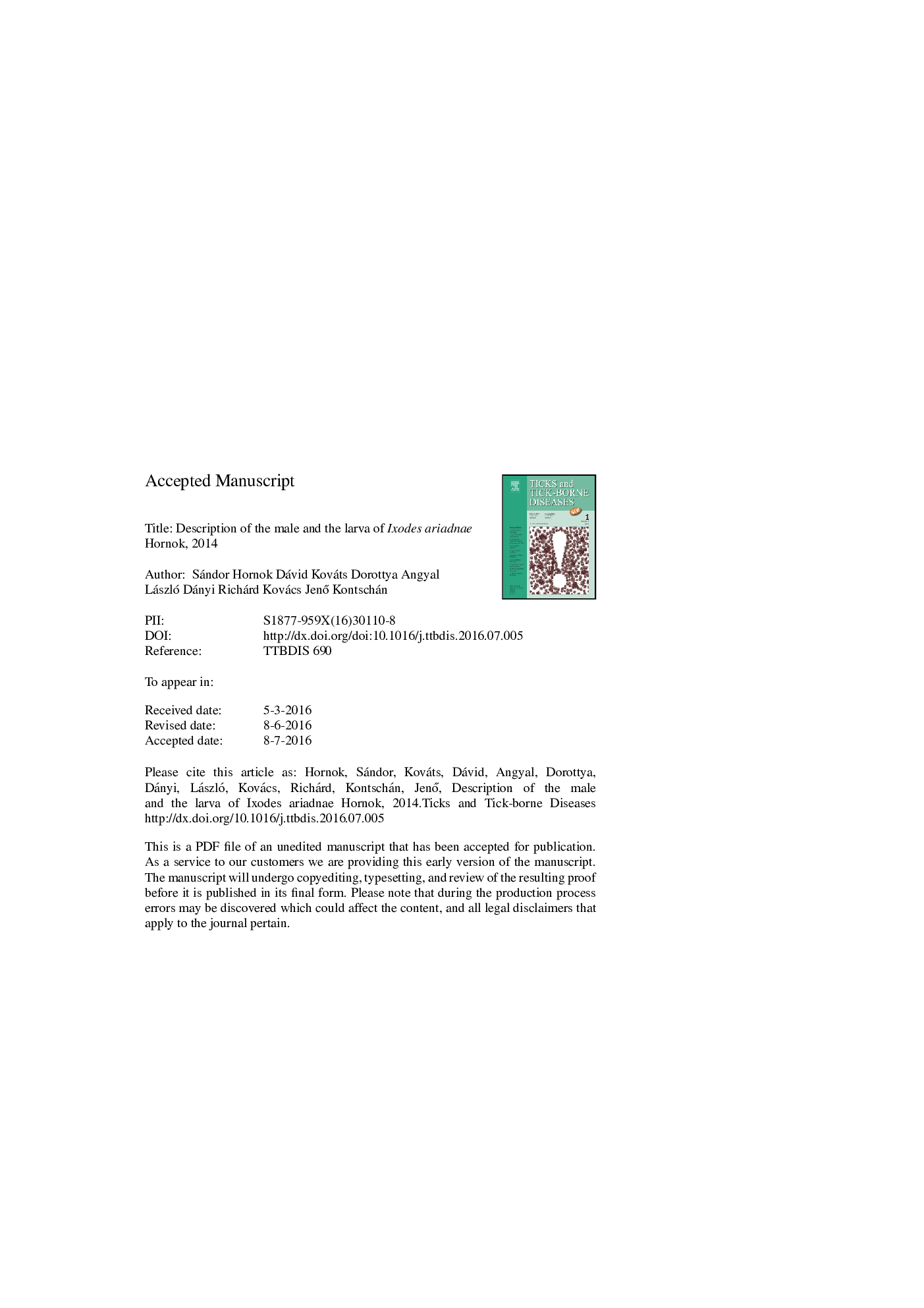| Article ID | Journal | Published Year | Pages | File Type |
|---|---|---|---|---|
| 5546521 | Ticks and Tick-borne Diseases | 2016 | 14 Pages |
Abstract
Male ticks collected from cave walls in Hungary showed a different morphology from those of I. vespertilionis and I. simplex. Molecular analysis of the cytochrome oxidase subunit I (COI) gene of these ticks verified them as conspecific to I. ariadnae. In addition, a larva of I. ariadnae was removed from a Daubenton's bat (Myotis daubentonii Kuhl, 1817). The male of I. ariadnae is characterized by long legs (7-8 mm; I. vespertilionis: 8-10 mm; I. simplex: 2-2.2 mm), relatively short palpal setae (30-100 μm; I. vespertilionis: 100-200 μm; I. simplex: 20-50 μm) and straight lateral edge of palps, the genital aperture (enclosed by a line of sclerotization) situated anteriorly to second intercoxal space and rounded coxae. The larva of I. ariadnae has long legs (2-2.2 mm; I. vespertilionis: 1.6-1.8 mm; I. simplex: 1 mm), broad palps (length Ã width: 200 Ã 90 μm; I. vespertilionis: 200 Ã 70 μm; I. simplex: 140 Ã 60 μm), pentagonal and posteriorly reverse bell-shaped scutum. These features allow to distinguish the male and the larva of I. ariadnae from those of I. vespertilionis (of which the male has longer palpal setae and curved lateral edge of palps, the genital aperture is situated posterior to the second intercoxal space, and the second coxae are squared; the larva of I. vespertilionis has narrower palps and posteriorly triangular scutum) and I. simplex (of which the male and the larva have considerably shorter legs, palps).
Related Topics
Life Sciences
Agricultural and Biological Sciences
Animal Science and Zoology
Authors
Sándor Hornok, Dávid Kováts, Dorottya Angyal, László Dányi, Richárd Kovács, JenÅ Kontschán,
